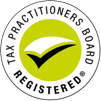There is no one best business structure. Every person’s circumstances are different so what might be an appropriate structure for one person may not be an appropriate structure for another. Further, often more than one type of structure may suffice and so a choice needs to be made.
The most important thing is to ensure that the final decision is an informed decision. That the taxpayer’s particular circumstances have been taken into account and that all the advantages and disadvantages of the chosen structure had been considered.
When selecting a structure for your business it is also important to recognise that circumstances change and so where possible a structure must be flexible enough to cope with changes to the taxpayer’s circumstances that may occur in the future. It must also be flexible enough to cope with changes that are outside the taxpayer’s control such as changes to the tax laws, other laws, the industry in which the taxpayer operates, personal circumstances etc.
Often these changes will require restructuring in the future or maybe even a change in structure. However, restructuring or a change to a new structure can often have costly consequences in terms of taxes, stamp duty etc. and so, where possible, a structure that provides flexibility, can often cope with change without incurring these costs.
There are many different factors to take into account when selecting a structure and many of these are listed below. It is important to recognise that even if two taxpayers have exactly the same circumstances they may, quite appropriately, choose different structures. For example, one taxpayer may feel more comfortable owning assets in their own name and operating as a sole trader rather than using an entity such as a company or trust because they have little understanding of companies and trusts. Whereas another taxpayer who understands companies and trusts may choose to operate their business through a company or trust.
A very important issue to consider is what is the taxpayer trying to achieve and for whom. Often a taxpayer’s objectives include one or more of the following:
- Asset protection;
- Flexibility;
- Tax effectiveness;
- Ability to access capital;
- Ease of administration;
- Minimal establishment and ongoing administration costs;
- Allows for growth;
- Allows for the business to be sold if desired;
- Succession planning – allows the business to be passed to children and later generations cost effectively;
- Allows for current tax planning;
- Allows for future tax planning;
- Provides for retirement.
Factors to take into account when selecting a structure
Below is a non-exhaustive list of information and factors to obtain and consider when deciding on a structure.
1. The taxpayer’s personal circumstances
- Immediate family members’ ages and incomes;
- Other relatives that the taxpayer may want to benefit;
- Assets owned and in whose name and their value;
- Liabilities.
2. The taxpayer’s current superannuation arrangements
- Does the taxpayer have a SMSF?
3. The taxpayer’s personal succession planning arrangements
- What does the taxpayer’s will provide?
4. The taxpayer’s business succession planning arrangements
- When does the taxpayer intend to retire;
- Is it intended for the business/asset to pass to the taxpayer’s children?
- Is it intended to bring third parties into the business in the future?
- What would the taxpayer like to happen if the taxpayer becomes incapacitated or dies?
5. Full details of the business
- Will personal services income be derived?
- What is the expected turnover;
- In what type of industry will the business operate?
- Is the business restricted from operating in any particular type of entity?
6. Who will be the owners of the business?
- Will it be owned by the one family or will there be independent parties?
- What percentage will each party own?
7. How will the business be financed?
- Debt or equity?
- Will money be borrowed externally or from other entities within the family group?
- Will the finance need to be repaid in the future?
8. Will the business require significant capital assets?
9. Is it intended to acquire business premises?
10. Are discretionary distributions of income or capital required?
11. Will the business employ people?
- How many employees are expected?
- Will those employees be third parties or family members?
- Will it engage contractors?
- How many employees and contractors is it expected to engage?
12. Which structures does the taxpayer understand and would be comfortable to operate?
- Will the taxpayer receive ongoing assistance from their tax adviser to run the structure or do they wish to run it themselves?
13. What are the short and long term plans for the business?
- Expected Growth rate;
- Intention to allow outside investors (debt or equity);
- Future turnover and profit forecasts;
- Is the intention to sell the business in the near future?
- Which has greater priority; minimising tax on annual income or on a future sale of the business?
- Is it intended to float in the future?




